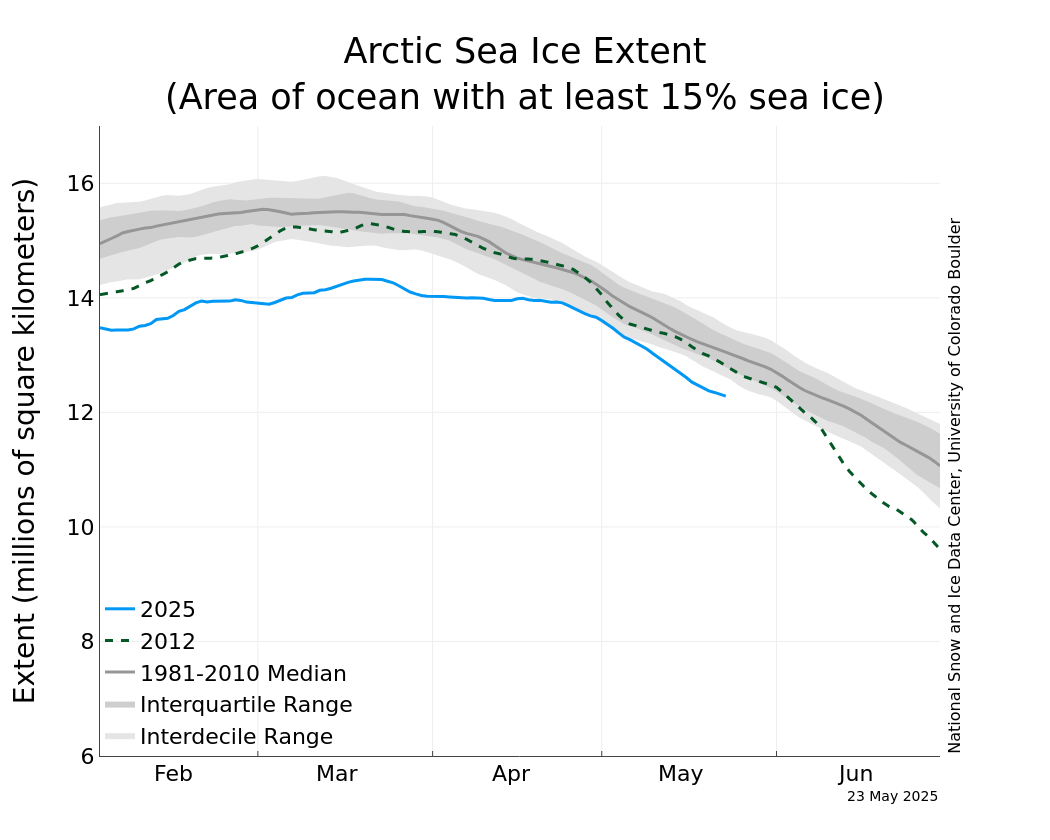
Mark Cochrane
Another year of low ice cover in the Arctic. So what’s new? Few know about this and fewer care. The decline has been going on so long that we fail to be shocked anymore. In the graph below the gray area is where 95% of years should fall. We are well below that area, yet again, about where we were last year. The dashed line is 2012 when we experienced the lowest sea ice cover (in September). Depending on the vagaries of the weather, this year may or may not be the lowest on record but just looking at the area of cover is misleading, since it tells you nothing about the thickness of the ice.

As the ice cover expands in the cold Arctic winter it covers the ocean and traps the heat it contains. This allows the air temperatures to drop very low above the ice. Think of the ice as the covers on your bed. If your covers are thick your body heat stays contained even on a cold night. If you have just a thin sheet you don’t stay quite so comfortable.
In the Arctic, sea ice gets thicker the older it gets as it goes through successive winters. As recently as the 80s, 30% or more of the ice cover was 5+ years old and first year ice was not much different at about 35% of the area. Now, older ice area has been reduced to <5% while first year ice makes up nearly 70% of the area.

Thin ice breaks easier during Arctic storms and, much like crushed ice in your drinks, melts faster. Open water in the Arctic summer enjoys 24 hours a day of sunlight. Ice reflects most of the heat, but open water absorbs almost all of it. This makes the Arctic ocean warm more and more year after year, which in turn makes the formation of new ice in teh winter harder and harder until later in the year, after enough heat escapes the surface waters. That heat plays havoc with the regional weather in the Arctic. The Polar Vortex is weaker and slower to form making it more likely that cold Arctic air will spill out in bursts across North America and Europe.

The ‘death spiral’ map shows how sea ice volume is circling the drain that will one day, in the not too distant future, end with an ice-free Arctic summer. How much ice have we lost in the last 4 decades? Comparing April 2017 to April 1979, the reduced volume of Arctic sea ice would be nearly enough to cover the entire combined land area of both Canada and the United States with 1 meter of solid ice.
Alas, the only thing poorer than the human race’s ability to understand the exponential function and large numbers is its grasp of geography…
Mark
